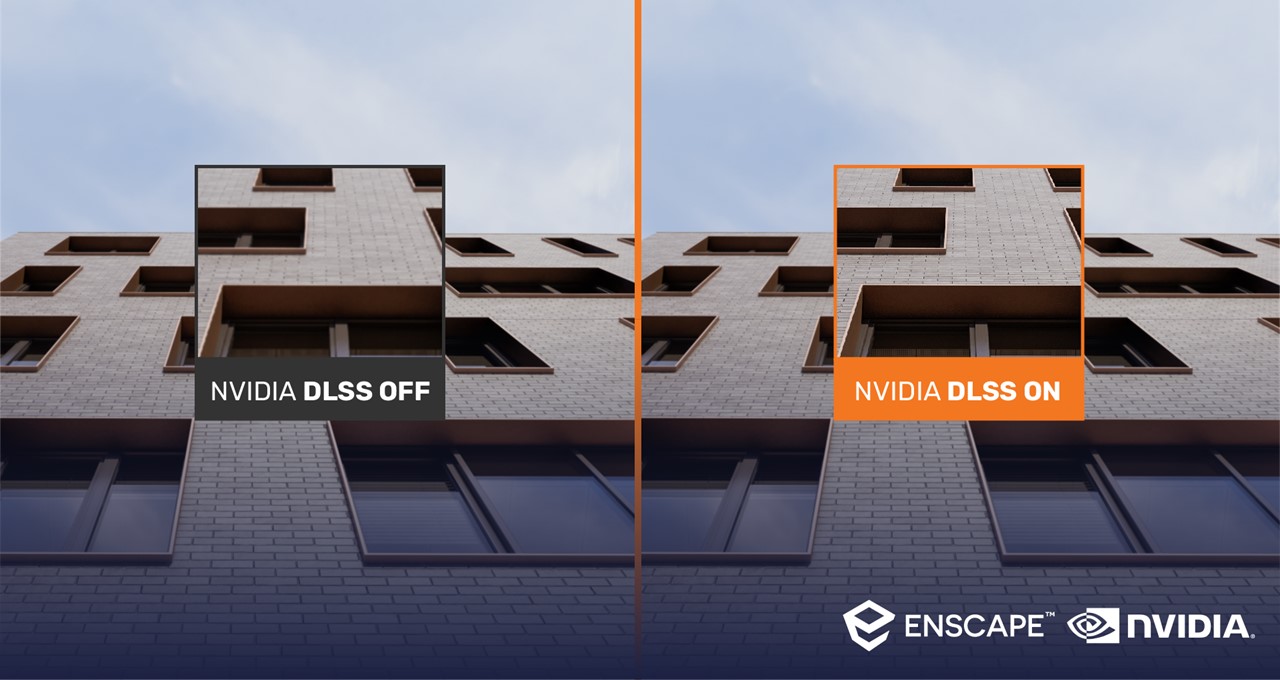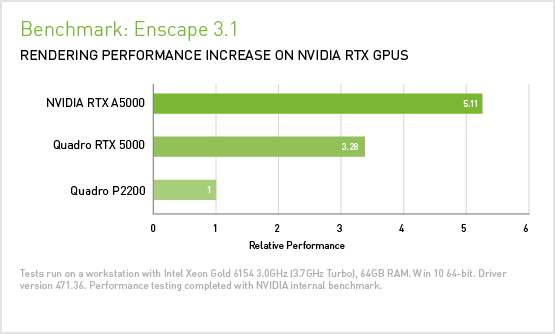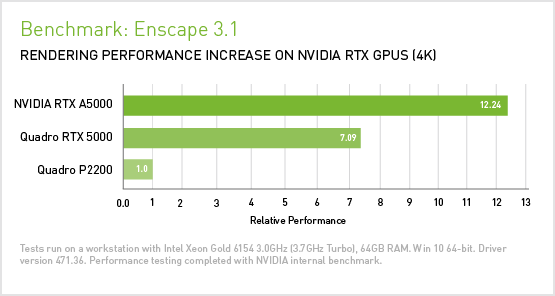Architectural visualization has benefited from many advances in technology, from real-time photorealistic rendering software to high-quality immersive virtual reality (VR) environments.
Combined with the powerful graphics performance from the latest generation NVIDIA RTX GPUs, these breakthroughs let architects and designers visualize their models faster. But it’s not just hardware that’s helping professionals transform photorealistic rendering. AI technologies are also advancing design workflows in the industry.
NVIDIA Deep Learning Super Sampling (DLSS) is a groundbreaking, AI-powered rendering technology that delivers ultra-high-resolution ray-traced images. Enscape, a leading supplier of rendering software for architectural visualization, is integrating NVIDIA DLSS in the 3.1 release of its real-time rendering and VR plugin.
With Enscape supporting DLSS, it’s now easier for architects and designers to harness the power of AI and boost the realism and performance of architectural visualization workflows.
The Growth of AI in AEC Industry
As high-fidelity GPU-accelerated visualization of 3D building models become more commonly used by architecture firms, innovative rendering software vendors like Enscape are taking large strides in speeding up photorealistic rendering and making it more easily accessible with easy-to-use functionality.
Enscape was one of the first rendering engines to support NVIDIA RTX in 2019. This delivered the benefits of real-time ray tracing to architects and designers by leveraging the first-generation RT Cores in RTX-powered workstations to enhance the speed, accuracy and realism of their 3D models and animations.
With accurate ray tracing and massively accelerated speed from RTX, project teams and clients improved decision-making, and archviz specialists gained time to iterate more during creation of compelling renders for competitions and bid submissions.
With the introduction of DLSS support in Enscape 3.1, architects and designers with NVIDIA RTX-powered workstations gain even more benefits, including:
- Improved real-time performance of walkthroughs and higher frame rates with much lower GPU requirements.
- Decreased video rendering time and increased image quality.
- Higher quality virtual reality experiences with the latest generation of high-resolution VR headsets.
Following up NVIDIA’s invention of AI-accelerated rendering denoising, NVIDIA DLSS taps into the power of a deep learning neural network to increase graphics performance using Tensor Cores — dedicated hardware for AI processing on NVIDIA RTX professional GPUs. This upscaling technique allows Enscape to render internally at a lower resolution but output a crisp, clean high-resolution image for high-quality videos and high-performance VR walkthroughs.
AI is powering enhancements for design visualization with tools like Enscape. And there are plenty of advancements in other areas such as autonomous construction vehicles and robotics.
Learn more about the role NVIDIA RTX plays in driving these innovations forward for the AEC industry.
Featured image courtesy of Enscape.


